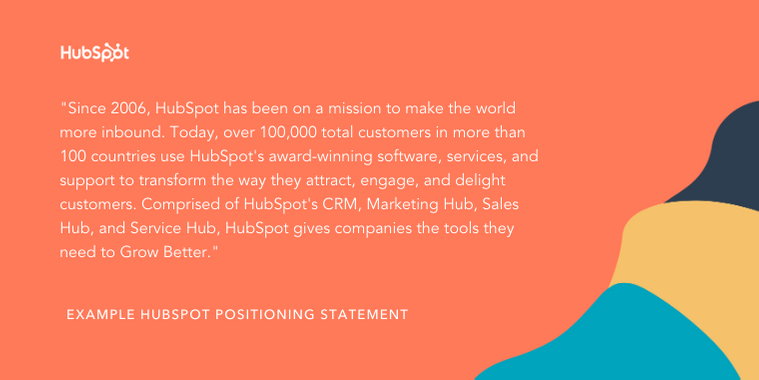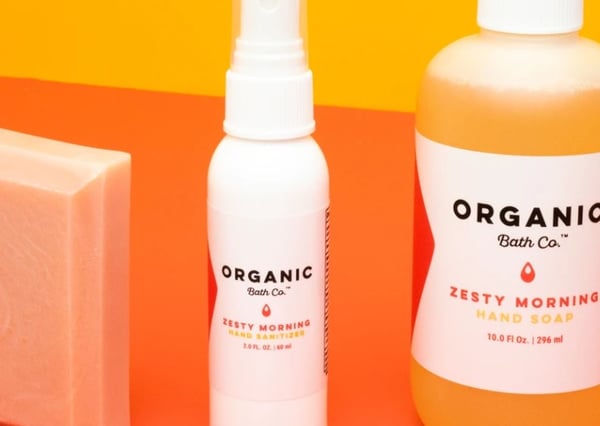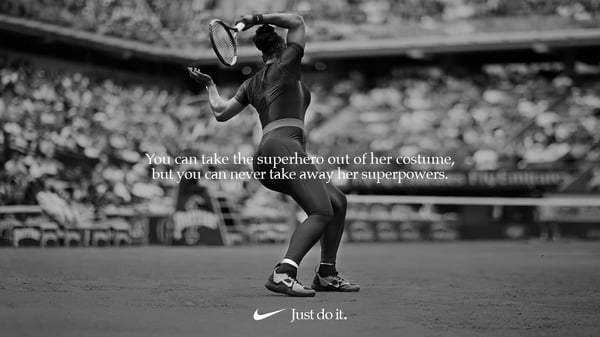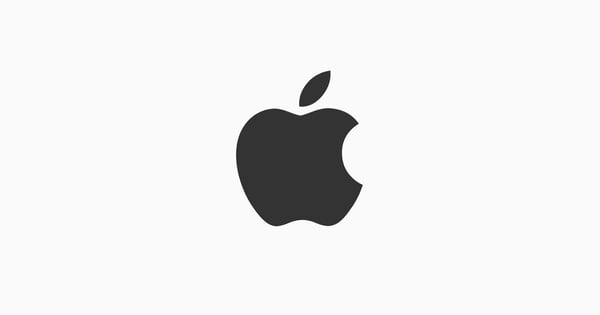
Image this: You are making ready to launch your new product. You’ve got spent numerous hours, days, weeks, months, even years figuring out what units the product other than the competitors and growing your model id.
However how are you going to guarantee your advertising efforts are aligned with the model?
The reply? Positioning.
Your positioning impacts all elements of your branding and the way your market sees you. It influences all the things your corporation presents and shares about your product and model together with your audience. Your inside groups profit enormously from efficient positioning, too — it helps gross sales reps, entrepreneurs, and repair and assist groups create extra pleasant and on-brand experiences for purchasers.
When shoppers go to your organization web site, view an advert, or try your Twitter web page, each bit of content material ought to talk the enterprise’ core values and model and a positioning assertion helps you do precisely that.
![Free Resource: 10 Positioning Statement Templates [Download Now]](https://no-cache.hubspot.com/cta/default/53/8c61666f-cdca-4107-90d3-3e8f5720d881.png)
What’s a positioning assertion?
A positioning assertion is a short description of a services or products and a proof of the way it fulfills a specific want of the goal market. The objective of a positioning assertion is to align advertising efforts with an organization’s model and worth proposition.
Positioning statements are inside instruments that assist entrepreneurs attraction to their buyer personas in a relevant way. They’re a must-have for any positioning strategy because they create a clear vision for your brand.
Having a clear and concise positioning statement is important because it gives potential consumers the ability to understand your business at first glance. Buyers want to know how your product and purpose differentiate you from the rest of the market, without buying the product first.
What is the purpose of a positioning statement?
The purpose of a positioning statement is to convey a brand’s value proposition to its ideal customers. It also frames the brand’s identity, purpose, and distinguishing features within the context of the buyer’s experience.
To craft your positioning statement, you’ll need to get crystal clear on a few key facets of your business:
- Who you serve
- What value you offer
- How you position your offer
- Why you’re in business
- What makes you different from the competition
Next, let’s talk about how a positioning statement differs from some other common guiding principles in a business’ marketing strategy.
Positioning Statement vs. Mission Statement
A mission statement is the purpose your business serves in the market — it’s an inherent part of the organization that guides every business function. When considering the “what, why, and how” of your business, a mission statement answers the question “why” while the positioning statement answers the “what.”
(If you’re curious about what the “how” looks like, here it is.)
Unlike a mission statement, a positioning statement is not public-facing. At its core, your business’s positioning statement summarizes the value that your brand, products, and services bring to the target market.
Value Proposition vs. Positioning Statement
The value proposition and positioning statement are both key elements in a business’ marketing strategy, however, there are differences between these two. A value proposition describes what sets your product or service apart from competitors. It gives an overview of the benefits a product or service provides.
A positioning statement is broader and it’s created after you’ve developed your business’ value proposition. It also identifies the primary customer benefits — why someone needs your product or service.
Now that you understand the differences among some common business and marketing elements, here are the core elements of strategic marketing positioning that you’ll need to know.
The Core Elements of Strategic Market Positioning
As mentioned earlier in the article, if you want to craft your positioning statement, you must first have a good understanding of your positioning as a whole. This includes defining the following core elements:
- Target market
- Market category
- Customer pains
- Brand promise
- Brand identity and values
Target Audience
They say that “the riches are in the niches,” which comes down to the idea that, even if anyone can use your product or service, you should still be targeting specific buyers to maintain the integrity and differentiation within your brand.
One of the best ways to define a solid target audience is by creating a buyer persona — also known as your ideal customer.
Product Positioning
Product positioning should lead with the product’s benefits rather than its features. A smart way to do this is to imagine your customer’s life before and after using your solution. Then, tell the story of what happens to them when they make that decision — that’s the benefit you’ll include in your product positioning.
Market Category
A market includes buyers and sellers. A category defines a specific segment of that market. Market categories can be as broad as “grocery store” and as niche as “vegetarian health food store.” Market categories usually start out broad and get more niche as the businesses occupying that market expand their product and service offerings to the consumers in the market.
Whether your market category is developed or you’re part of an emerging or niche market, you’ll need to define who the buyers are in the space, where they’re searching for goods and services, and who currently has their attention. You’ll want to define what your competition offers and how you can position your brand apart from those competitors.
Customer Pains
Customer pains are the problems or issues your target audience is experiencing that could be solved with products or services available in your market category. Your product or service should aim to address customer pains and provide a solution.
Brand Promise
Your brand promise is ultimately what the target audience or buyer persona stands to gain from using your product or service. It’s what success looks like to them if their pain or problem is resolved.
Brand Identity
Brand identity is the personality of your business and includes both visible factors (such as logo design) and invisible ones (such as values or voice). Brand identity is one aspect of strategic market positioning that will set you apart from competitors and help you gain recognition from your target audience.
Values
Values guide how your business makes decisions within the context of your brand. They create the culture of your organization and leave a favorable impression on your target audience. They are the intangible methods with which you execute your mission and vision.
Once you have a solid understanding of these core elements, you can begin crafting the positioning statement.
Pro Tip: Before you get started writing your positioning statement, make sure you’ve developed your business’ value proposition. You’ll want to identify your target audience and their pain points before describing how your product or service can be the best solution for those challenges.
How to Write a Positioning Statement
- Create a vision board.
- Keep it brief.
- Make the statement unique and memorable.
- Remain true to your business’ core values.
- Include what the brand delivers to consumers.
- Differentiate your business from the competition.
- Keep it simple.
- Consult a colleague.
When writing and evaluating your positioning statement, keep the following tips in mind:
1. Create a vision board.
Positioning statements are written documents. Since they don’t include images, video, or other visuals, it can be challenging to communicate what your business is, who it serves, and why that matters in just a few sentences.
To bypass the initial blank page syndrome, create a vision board instead. This works because, in a recent study, researchers at Columbia University found that emotional response is linked to the visual characteristics of an image. To leverage this response, look for images that represent your customer in the environment where they need your product or service the most. Notice the emotions in the images, who is around your ideal customer in the image, and what they’re doing in the image to solve the problem.
Image Source
Creating a vision board that represents your target audience when they need your product the most can help make your positioning statement come to life.
2. Make it brief.
Your brand’s positioning statement should be concise and to the point. Aim for no more than three to five sentences, if possible.
The wordier that your statement gets, the less factual it becomes. It then risks becoming more aspirational than what your business is, with more elements that are more inflated than grounded in truth.
3. Make it unique and memorable.
This statement should be unique to your company and the problems you aim to solve. When crafting your positioning statement, be sure to emphasize the distinctive qualities of your brand.
Buyers should be able to see the special value that your business can provide or solve for. Many markets are already saturated with products or services that are similar to your offering, your statement should be able to capture their attention against the noise.
4. Remain true to your business’ core values.
The positioning statement isn’t the time to get fancy and pitch a new angle for the business. Your brand’s positioning statement should accurately reflect the core values of your business.
Clear core values in your positioning statement also sends messages to your internal team. It helps new employees with better alignment. In addition to letting consumers know your stances, it helps existing team members stay on the right track and continue to deliver on your brand’s promises.
5. Include what the brand delivers to consumers.
Your brand offering is a vital part of your positioning statement. It’s the main reason that customers are seeking you out, so when crafting your own, you need to cover these two bases:
- Who does your company serve?
- How does your company serve this group?
Succinctly state who your customer is and how you will help them in your positioning statement.
6. Differentiate your business from the competition.
An effective positioning statement should articulate what differentiates a brand from its competition. Highlight your company’s unique qualities and how those qualities help serve your customers, you can even consider a niche marketing strategy.
Does your brand have cause-related campaigns? Differentiate your brand by highlighting your goals to give back.
Does your brand serve a previously underrepresented target audience? Let them know clearly and proudly that you fill that gap.
There are so many different ways to stand out against the crowd, you just have to survey your competitors and see how you do it better.
7. Keep it simple.
In almost any circumstance, your team should be able to align key business decisions with your brand’s positioning statement due to its simple and easy-to-understand nature.
The more complicated your statement becomes, the less convincing or engaging it will be. Make sure your business’ value and offering is plain as day and buyers will understand and seek to learn more about it in their buyer’s journey.
8. Consult a colleague.
Once you’ve written your positioning statement, your eyes might deceive you. After spending several hours perfecting every word, you’ll think what you’ve written is wonderful, when in reality it’s full of jargon, acronyms, and features that aren’t clear to someone outside of your company.
Just because positioning statements aren’t public-facing doesn’t mean they shouldn’t be easy to understand. Investors, new hires, and external agencies who work closely with your businesses will need to use this document, too.
Pro Tip: To jargon-proof your positioning statement, have a colleague who is unrated to your business review the statement for you and give feedback. They’ll make meaningful observations that you may have overlooked.
Positioning Statement Template
For [your target market] who [target market need], [your brand name] provides [main benefit that differentiates your offering from competitors] because [reason why target market should believe your differentiation statement.]
The template above can be used to help you form a positioning statement for your startup or small business. Add the details of your target market, company, and the main points that make your product or service stand out from competitors. You can also download 10 more position statement templates for free below.
Download Now: 10 Free Positioning Statement Prompts
Each business is unique, and it’s alright if your statement doesn’t fit the template exactly, but be sure to include the main points below:
- A description of the target market.
- A description of the target market needs.
- How your business will meet their needs.
- What differentiates your product or service from the competition.
- Why consumers in your target market should believe your brand’s claims.
You might need a little more inspiration before taking pen to paper and creating your own positioning statement. Here are some examples to get your creative juices flowing.
Positioning Statement Examples
Since positioning statements are meant to be kept from the public eye, you’ll rarely find one floating around the internet. Using the template we shared earlier, we’ve crafted a few example statements for recognizable brands using the information we know about them as consumers (or employees!) Below are examples of positioning statements of well-known brands to give you a feel for how to create one for your business.
1. HubSpot
 HubSpot Positioning Statement:
HubSpot Positioning Statement:
Since 2006, HubSpot has been on a mission to make the world more inbound. Today, over 100,000 total customers in more than 100 countries use HubSpot’s award-winning software, services, and support to transform the way they attract, engage, and delight customers. Composed of HubSpot’s CRM, Marketing Hub, Sales Hub, and Service Hub, HubSpot gives companies the tools they need to Grow Better.
Why It Works:
With a clearly defined mission and track record that could capture the attention of prospects, HubSpot’s positioning statement leads with its trustworthiness and variety of products to better service businesses looking to grow and scale for the future.
2. Coca-Cola
.jpg?width=600&name=coca-cola-brand-image%20(1).jpg)
Coca-Cola Positioning Statement:
For individuals looking for high-quality beverages, Coca-Cola offers a wide range of the most refreshing options — each creates a positive experience for customers when they enjoy a Coca-Cola brand drink. Unlike other beverage options, Coca-Cola products inspire happiness and make a positive difference in customers’ lives, and the brand is intensely focused on the needs of consumers and customers.
Why It Works:
While their product offering is literally beverages, Coca-Cola leads its positioning statement with how much of a positive experience they want to provide its customers. By appealing to prospect’s emotions, with a vast variety of products to choose from, buyers can know they’re buying from a company that wants to better their lives — even with something as small as a cold drink.
3. White Dog Distilling

White Dog Distilling Positioning Statement:
White Dog Distilling was founded in 2016 by the husband/wife team of Carlo and Alecia Catucci based on passion, spirit, and the journey from grain to glass. Bolstered by Carlo’s background in physics and Alecia’s culinary and product development experience, they set forth with one goal in mind: to produce high-quality distilled spirits that could appeal to both novice spirit drinkers and longtime aficionados alike.
Why It Works:
White Dog leads its positioning statement with the high quality it delivers to customers. Offering locally sourced and sustainable ingredients attracts customers looking for good value versus price, with delicious taste, and making it accessible to those who aren’t well versed in spirits.
4. Alaska Airlines

Image Source
Alaska Airlines Positioning Statement:
We are creating an airline people love. Each day, we are guided by our core values of “own safety”, “do the right thing”, “be kind-hearted”, “deliver performance”, and “be remarkable at work and in our communities.” Alaska Airlines also fosters a diverse and inclusive culture and is an Equal Opportunity Employer.
Why It Works:
Alaska Airlines leads its positioning statement with love and heart. Prospects can be introduced to the brand feeling as though they’re more than your typical transactions, but instead as unique individuals who are worth delivering great service and inclusive experiences to.
5. Organic Bath Co.

Image Source
Organic Bath Co. Positioning Statement:
We are creating an airline people love. Each day, we are guided by our core values of “own safety”, “do the right thing”, “be kind-hearted”, “deliver performance”, and “be remarkable at work and in our communities.”
Why It Works:
Organic Bath Co. has a brilliant positioning statement that successfully conveys its focus on quality ingredients, health, and the value of rest. Prospects could be looking for a soap brand that not only is made from organic and safe ingredients, but encourages its customers to indulge themselves in the relaxing experience of using its product line.
6. Amazon

Image Source
Amazon Positioning Statement:
For consumers who want to purchase a wide range of products online with quick delivery, Amazon provides a one-stop online shopping site. Amazon sets itself apart from other online retailers with its customer obsession, passion for innovation, and commitment to operational excellence.
Why It Works:
Amazon cuts straight to the chase in its positioning statement, and that’s a big testament to its success. It clearly outlines that its store is the customer’s one-stop shop to find everything they need, to better help the customer achieve their goal.
7. IMPACT

Image Source
IMPACT’s Positioning Statement:
At IMPACT, we have revolutionized the way inbound marketing is done and taught to businesses by reimagining the agency-client relationship through the ground-breaking principles of They Ask, You Answer.
Instead of creating a cycle of dependency, wherein our clients are reliant upon us to move the needle and get results, we empower all of the companies we work with to take ownership of their digital sales and marketing. Instead of fishing for you, we’ll “teach you how to fish” and feast on remarkable results for a lifetime.
With a wide range of consulting services — content marketing, video sales and marketing, HubSpot, website strategy and design, and more —find out how we can help you achieve incredible results by becoming the most trusted voice in your space.
Why It Works:
IMPACT’s positioning statement explains how it goes against the grain to better serve its customers in the market, by eliminating the cycle of dependency. This approach is unique and will attract many prospects to want to learn more about its solutions.
8. Beautycounter
.jpg?width=600&name=beauty-counter-brand-position%20(1).jpg)
Image Source
Beautycounter Positioning Statement:
One by one, we are leading a movement to a future where all beauty is clean beauty. We are powered by people, and our collective mission is to get safer products into the hands of everyone. Formulate, advocate, and educate—that’s our motto for creating products that truly perform while holding ourselves to unparalleled standards of safety. Why? It’s really this simple: beauty should be good for you.
Why It Works:
As opposed to other beauty brands that strive to fix or perfect customer’s complexions without much focus on ingredients, Beautycounter takes the unique stance that beauty should be good for you beyond looks. The focus on cleaner, safer ingredients will really attract customers looking to maintain their complexions, instead of temporarily fix them.
9. Nike

Nike Positioning Assertion:
For athletes in want of high-quality, modern athletic put on, Nike supplies prospects with top-performing sports activities attire and footwear product of the best high quality supplies. Its merchandise are essentially the most superior within the athletic attire trade due to Nike’s dedication to innovation and funding within the newest applied sciences.
Why It Works:
Nike’s positioning assertion clearly outlines its vary of merchandise to raised serve athletes, and doesn;t use exclusionary language to outline what an athlete is. By doing so, people who take pleasure in hobbies and professionals alike can derive worth from its product line.
10. Thrive Market
.jpg?width=600&name=thrive-market-brand-position%20(1).jpg)
Picture Supply
Thrive Market Positioning Assertion:
Thrive Market is a web-based, membership-based market making the best high quality, wholesome and sustainable merchandise obtainable for each funds, life-style, and geography.
Why It Works:
Brief and to the purpose, Thrive Market let’s prospects know precisely what it has to supply in a single sentence. Prospects received’t need to guess what kind of product they will discover from it, and so they additionally know that their line should be extraordinarily versatile, too.
11. Apple

Picture Supply
Apple Positioning Assertion:
For people who need the very best private laptop or cellular system, Apple leads the expertise trade with essentially the most revolutionary merchandise. Apple emphasizes technological analysis and development and takes an revolutionary strategy to enterprise finest practices — it considers the impression our merchandise and processes have on its prospects and the planet.
Why It Works:
Apple’s positioning assertion appeals to folks of all totally different backgrounds to anticipate high quality merchandise made with intent to innovate in a means that helps folks and the surroundings. It even features prospects’ belief by emphasizing its trade authority, making it much more profitable.
12. McDonald’s
.jpg?width=1320&name=mcdonalds-brand-position%20(1).jpg)
Picture Supply
McDonald’s Positioning Assertion:
For people searching for a quick-service restaurant with an distinctive buyer expertise, McDonald’s is a pacesetter within the fast-food trade, with its pleasant service and consistency throughout hundreds of handy areas. McDonald’s’ dedication to enhancing operations and buyer satisfaction units it other than different fast-food eating places.
Why It Works:
McDonald’s doesn’t slender its audience, however as an alternative panders to people of all types searching for a quick and satisfying service. It additionally leads with its place as an trade chief to realize belief from prospects.
Craft a Positioning Assertion for Your Enterprise
For people searching for a quick-service restaurant with an distinctive buyer expertise, McDonald’s is a pacesetter within the fast-food trade, with its pleasant service and consistency throughout hundreds of handy areas. McDonald’s’ dedication to enhancing operations and buyer satisfaction units it other than different fast-food eating places.
Editor’s notice: This submit was initially printed in August 2020 and has been up to date for comprehensiveness.
